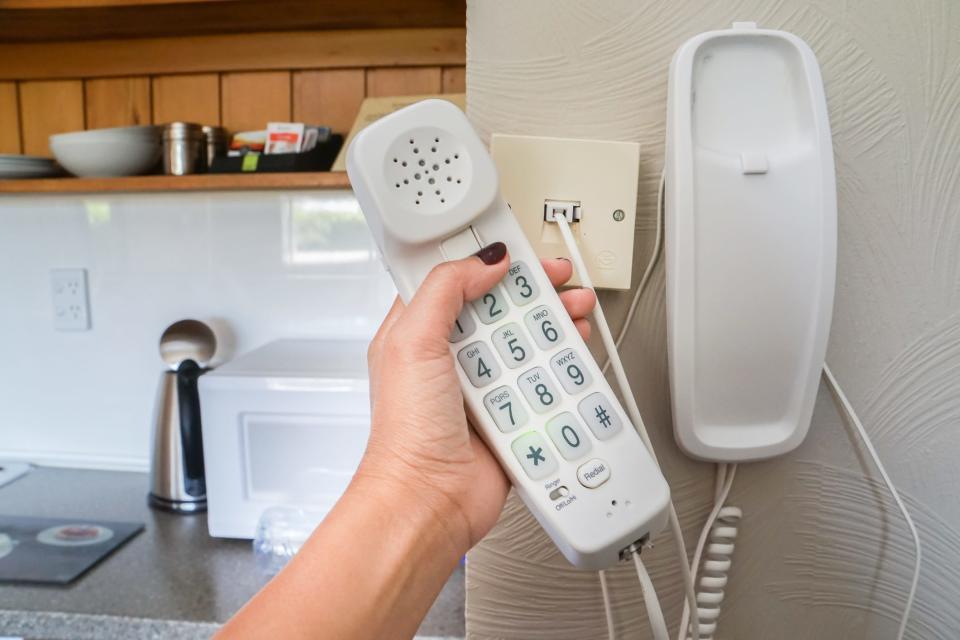Florida cell phone outage brought memories of Hurricane Ian. How to be prepared the next time
Tens of thousands of people across Florida and around the country suddenly found themselves unable to use their cellular phones Thursday when AT&T suffered a massive outage. And that's a problem.
Even for those of us who are not addicted to our phones, the loss of cellular service can be devastating. You can't call 911 in an emergency, much less family and friends. If you use mobile devices to take payments for your business, are you out of business? And you won't be able to get into any websites or services that require login authorization through your phone.
So what do you do? You've got some options, and you should be aware of them and be ready before this happens again.
If cellular goes out, try Wi-Fi
If cellular service is out but you still have a Wi-Fi connection, you should be able to do just about everything you could before, even make calls. (Here's how to check cell service status.)
To make phone calls, go into your phone's settings and turn on Wi-Fi calling. For iPhones, you can find it under either the Cellular settings page or Phone settings. Android users can go into their Phone app and activate it there. Phone calls should then work the way you're used to.
With Wi-Fi you also can use any of your messaging apps or video chat programs.
Got an emergency and no cell or Wi-Fi? Try SOS
Everyone in Florida, a state prone to hurricanes and extended periods without power, knows that you can't always depend on a working Wi-Fi network. If your cell service company is down, the Emergency SOS call function on your phone can attempt to route your 911 call through other networks, if they're available. If you have an iPhone 8 or newer, make an SOS call like this:
Press and hold the side button and one of the volume buttons (either will work) until the Emergency SOS slider appears.
Drag the Emergency Call slider to call emergency services.
If you keep holding the side and volume buttons but don't make the call, your phone will start a countdown and sound an alert. If you release the buttons after the countdown, your phone will call emergency services in your area and send them your location. It will also send notices to any emergency contacts you've added to your phone.
For iPhones 7 and earlier, rapidly press the side or top button five times to bring up the Emergency Call slider and drag it to make the call.
If you have an iPhone 14 or later, you can use Emergency SOS via satellite to text emergency services even when you're completely off the grid and nowhere near any cell service.
You can use a landline phone, if you can find one

Remember landline phones? (Or, as we used to call them, phones?) They plugged into a wire coming out of a wall in your house. They've also been largely abandoned by many Americans as being unnecessary now that they're essentially carrying a telecom service in their pockets.
However, Floridians, especially those in areas that hurricanes and tropical storms seem to like, may want to reconsider.
Landline phones work perfectly well without cellular service and even without power. If keeping your own phone service is impractical, check with your neighbors to see if anyone nearby will have a phone if the power goes and stays out.
Have alternative multi-factor authorization methods ready to get into your apps
If you've set up multi-factor authorization (MFA) set up for your mobile apps — and you should, especially for any apps that have access to your personal or financial details — you'll need a way besides a text to your phone to use it or you'll be locked out of your own accounts.
MFA was originally called two-factor authorization (2FA) and was a way to verify you were who you said you were when you logged into a site because it was assumed you'd have your phone with you and could reply to a security text. It became a multi-factor system when more options were added. Two methods that work without cellular service or Wi-Fi are:
An authenticator app such as Google Authenticator (iOS | Android), 2FAS (iOS | Android), Aegis (Android only), Authy (iOS | Android) or Microsoft Authenticator (iOS | Android), among others. These will provide codes to use to get into your accounts without cell service, but you will need cell service or Wi-Fo to set them up for use.
Paper. Some apps will allow you to create recovery or backup codes you can manually type in. Do that for any app that offers the option, write them down and keep them somewhere safe and private.
Selling things from your phone or tablet without cell service
Cash register apps and scanners have revolutionized small businesses by allowing anyone to take payments and send receipts with just their phone or tablet. But what happens when you can't connect to the internet?
Point-of-sale apps such as Shopify, Square and Clover require an internet connection for many of their services such as adding customer information, managing inventory, processing sales, sending receipts, handling shipping, etc. But they still offer an offline mode that will allow you to take credit card and cash payments, although card scanners may not work. Check your app's documentation for details.
Note that these services are not intended to work for an extended period without syncing through the internet. Square, for example, allows you to take credit card payments offline but they will expire if you can't reconnect within 72 hours. Some Clover products can take offline payments for up to 7 days.
This article originally appeared on The Daytona Beach News-Journal: Cell phone, power outage: How to use your smart phone anyway

